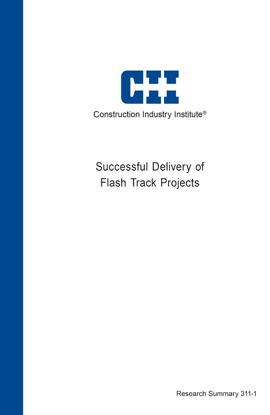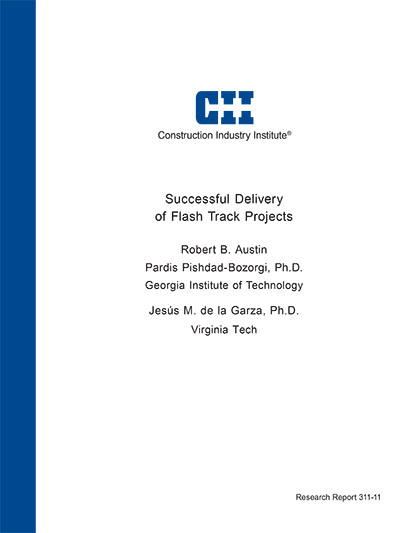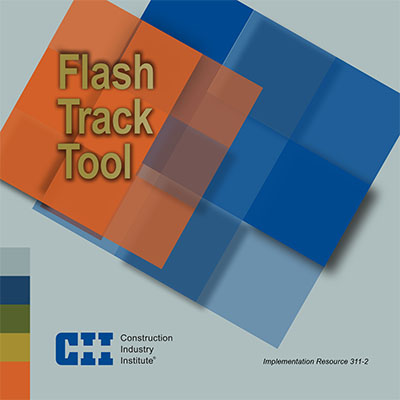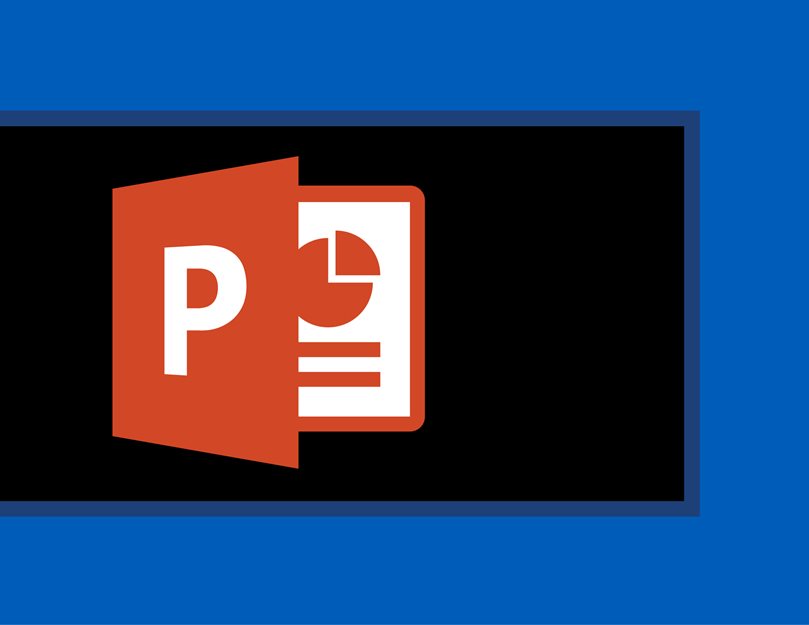
Successful Delivery of Flash Track Projects
Speed and quality of construction have always been driving factors in the construction industry, but, over the past decade, they have become increasingly important. Indeed, in the current environment of increasingly complex projects, shorter useful life cycles of products and processes, and the growing need of end users to be first to market, project professionals have developed a variety of concepts and methods to satisfy the ever-intensifying demand for faster project delivery. One such approach—fast-tracking—has become a staple of the construction industry to the extent that most organizations employ some level of it on all their construction projects. Still, the need for even quicker project deliveries is now being driven by a greater demand for emergency rebuilds, by pressing economic need, and/or stricter regulations. Meeting these increasing demands has led to the pursuit of faster fast-tracking or “flash tracking.”
While fast track projects are characterized by inter-phase integrations—achieved through overlaps across different phases of engineering, procurement, and construction—flash track projects demand inter-phase and intra-phase overlaps. This overlapping is enabled by parallel work packaging within each phase. For example, engineering work can be broken down into several work packages that can be performed simultaneously. Such a potentially chaotic approach requires highly coupled coordination and interface management processes.
To facilitate this emerging project delivery method, CII Research Team (RT) 311, Successful Delivery of Flash Track Projects, focused on identifying and ranking industry practices essential to the successful delivery of flash track projects. In addition to this extensive exploration of U.S. and international construction practices, RT 311 thoroughly examined project acceleration practices in other industries, including manufacturing, shipbuilding, and software development. The team’s methodology entailed a three-round Delphi process, and the use of the Analytic Hierarchy Process (AHP) to produce a comprehensive and robust prioritization of essential flash track practices and implementation recommendations. The result was a two-tiered structure of 47 essential flash track practices, which mainly emphasizes planning, execution, and organizational considerations, and considers cultural issues, delivery methods, and contractual considerations. The team also developed an Excel-based flash track tool, which includes a metric for assessing a project’s readiness for flash tracking.
To help companies with flash track implementation, the team also developed innovative implementation strategies for each of the 47 practices; these strategies include barriers to implementation, identification of heightened risks, and risk mitigating strategies. Integrated into the readiness metric, these guidelines will help eliminate the weaknesses the tool identifies in the flash tracking process.
After studying the 47 practices and implementation concepts, the team re-engineered accepted workflow processes, tailoring them for flash track projects, and proposing an innovative delivery approach that goes beyond the important work of CII Research Team 130, Reforming Owner, Contractor, Supplier Relationships. In its effort to develop a project delivery system to optimize supplier roles in EPC projects, RT 130 formulated the PEpC approach, recommending two parts of the procurement process: big “P” and little “p.” During the big “P” part of the process, the focus is on strategic procurement items, including complex engineered equipment and systems essential for project performance. During the little “p” phase, the team obtains the balance of items to be procured for the project. So, PEpC stands for “Procurement, Engineering, procurement, Construction.” (See the appendix for a summary of PEpC.)
RT 311 added a little “c” before the big “P” to propose the cPEpC approach, which calls for the earlier engagement, commitment, and collaboration of specialty subcontractors at project outset. This earlier involvement of construction personnel will provide their crucial input into scope definition, conceptual design development, and constructability considerations, among other critical project elements. The research team’s cPEpC approach incorporates simultaneous inter-phase and intra-phase integration, an innovative concept that can include parallel engineering and pre-fabrication. Other enablers of cPEpC are such emerging practices as BIM, design-assist services, pull planning, and a co-located integrated teams.
The research team designed the Flash Track Readiness Tool to help project teams determine whether the cPEpC model is appropriate for a given project. The team conducted internal verification and external validation tests to ensure the soundness, relevancy, and quality of the tool. This validation effort asked test-users on 13 projects to confirm that the tool is useful and that it addresses real-world project conditions and needs.
The top three reasons for using flash track delivery:
- Time to market (competitive advantage)
- Emergency rebuild
- Regulatory compliance
(RS311-1, p. 27)
A re-engineered delivery process that adopts a different and innovative delivery strategy. By adding a little "c" at the beginning of the process, the workflow stresses the critical importance of involving key specialty contractors in the preliminary conceptual design process.
· cPEpC = specialty contractors – Procurement (strategic procurement items) – Engineering-little procurement (balance of procurement items) – Construction
Adopting this different and more innovative delivery strategy plus exceptional execution of all normal project activities results in successful flash track projects. (RS311-1, p. 25)
The research identified 47 essential practices spread over the following six categories, providing discussion on the component practices including innovative implementation strategies. (RS311-1, p. 13)
1. Planning – 7 practices
2. Execution – 7 practices
3. Organizational – 9 practices
4. Cultural – 8 practices
5. Delivery – 8 practices
6. Contractual – 8 practices
Practices are statistically sub-divided into Tier 1 and Tier 2 levels, where Tier 1 level practices represent critical success factors associated executing flash track delivery.



